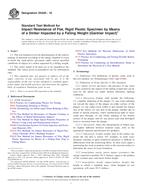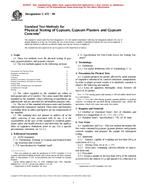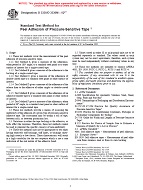1.1 This test method covers the measurement of total uranium (U) and thorium (Th) concentrations in soils, as well as the determination of the isotopic weight percentages of 234U, 235U, 236U, and 238U, thereby allowing for the calculation of individual isotopic uranium activity or total uranium activity. This inductively coupled plasma-mass spectroscopy (ICP-MS) method is intended as an alternative analysis to methods such as alpha spectroscopy or thermal ionization mass spectroscopy (TIMS). Also, while this test method covers only those isotopes listed above, the instrumental technique may be expanded to cover other long-lived radioisotopes since the preparation technique includes the preconcentration of the actinide series of elements. The resultant sample volume can be further reduced for introduction into the ICP-MS via an electrothermal vaporization (ETV) unit or other sample introduction device, even though the standard peristaltic pump introduction is applied for this test method. The sample preparation removes organics and silica from the soil by use of a high temperature furnace and hydrofluoric acid digestion. Thus, this test method can allow for sample variability of both organic and silica content. This test method is also described in ASTM STP 1291. Since this test method using quadrupole ICP-MS was approved, advances have been made in ICP-MS technology in terms of improved sensitivity and lower instrument background as well as the use of collision or reaction cells (or both) and sector field mass spectrometers with single and multiple detectors. These advances should allow this test method to be performed more effectively but it is the user's responsibility to verify performance.
1.2 The analysis is performed after an initial drying and grinding sample preparation process, and the results are reported on a dry weight basis. The sample preparation technique used incorporates into the sample any rocks and organic material present in the soil. The method of sample preparation applied differs from other techniques, such as those found in Practice C 999, which involve simply tumbling and sieving the sample; however, the user may select whichever technique is most appropriate to their needs.
1.3 The values stated in SI units are to be regarded as standard.
1.4 This standard does not purport to address all of the safety concerns, if any, associated with its use. It is the responsibility of the user of this standard to establish appropriate safety and health practices and determine the applicability of regulatory limitations prior to use.
Product Details
- Published:
- 01/01/2008
- Number of Pages:
- 12
- File Size:
- 1 file , 170 KB
- Redline File Size:
- 2 files , 300 KB


